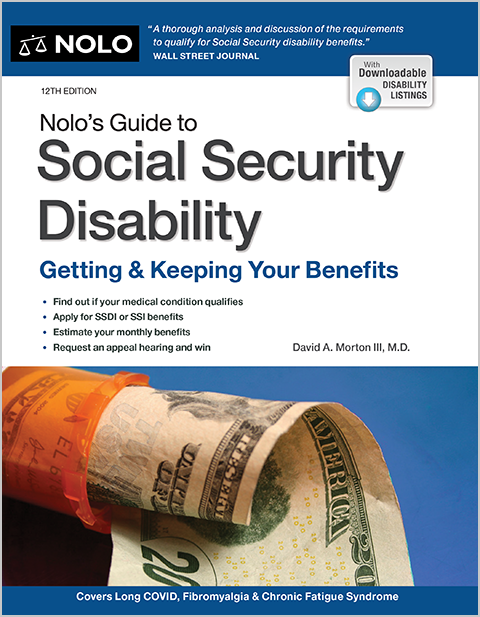Is long-term care (LTC) insurance a good investment?
Long-term care (LTC) for seniors can easily wipe out a lifetime of savings. Unfortunately, Medicare pays very little of long-term care, and Medicaid usually requires you to have very little assets and income before you can qualify. If you're looking for a way to cover the risk of needing long-term care later in life, long-term care insurance can offer an additional option in a landscape of limited options. However, it is expensive.
What Is Long-Term Care Insurance?
Long-term care insurance offers to cover part of your long-term care costs if you end up needing long-term care. There are two types, traditional (also known as standalone) LTC insurance and hybrid LTC insurance. With traditional LTC insurance policies, you'll pay a monthly premium for the coverage, which you may or may not actually end up needing. Hybrid LTC insurance policies combine coverage for long-term care with whole (permanent) life insurance. If you end up needing long-term care, those costs will come out of your death benefit (the payout to your loved ones under your life insurance policy). If you don't need long-term care, your death benefit will stay intact. While traditional LTC insurance follows a use-it-or-lose-it model, hybrid LTC insurance allows you to retain at least some of what you paid. However, hybrid LTC insurance tends to be more expensive.
Deciding Whether to Buy LTC Insurance
Is long-term care worth it? Before you decide you need long-term care insurance, it's important to understand several points:
- You won't be on the street without it. If you do end up needing extensive long-term care—for example, several years in a nursing facility—and you spend most of your assets on that care, you'll then be able to qualify for Medicaid.
- You might be paying premiums for decades. Even if you do end up needing long-term care—as many do—you might not need so much that it offsets the substantial amount you paid over many years.
- Long-term care insurance policies have limits on the benefits they provide. For example, most policies cover only a certain amount of time, such as three years' worth long-term care. Some but not all cover at-home care or assisted living, in addition to a nursing facility. Be sure you understand the benefits and their limitations of each policy you're considering.
- Hybrid LTC insurance makes sense only if you need whole life insurance. While hybrid LTC insurance can sound attractive—after all, you're not losing all of the money you paid in premiums if you don't end up needing long-term care—it is usually significantly more expensive than traditional LTC insurance. If you hadn't been considering whole life insurance in the first place, or if you have more use for money during your lifetime than at your death, you might want to think hard about whether hybrid LTC insurance really makes sense for you.
The Odds of a Long Nursing Facility Stay
While it is true that many people will need long-term care when they get older (and insurance agents tend to underscore this fact), the question you should really be asking when you're considering LTC insurance is: Will you need so much care that it will be worth the amount of money you spend on premiums over the years? And a related question: Would you be better off simply saving that money?
Consider this example: Naomi buys a traditional LTC insurance policy at the age of 55. The policy provides benefits of $200 per day for nursing home care and $100 per day of home care, for up to three years. Naomi pays $300 a month for this policy. Naomi ends up needing significant long-term care: one year of home care, beginning at age 75, followed by one year of nursing home care. This means she paid $72,000 in premiums (over 20 years) and got $108,000 ($36,000 for one year of home care plus $72,000 for one year of nursing home care) in benefits. This seems to be a good trade-off for Mary, but consider whether she could have done better by just putting her $300 per month premiums in secure investments over those 20 years. Assuming an investment return of 5%, she would have been better off "self-insuring"—that is, setting aside money to use in the event of needing long-term care.
(For simplicity, this example ignores rising costs of care as well as rising premiums.)
For some people—typically those with high income and significant assets—long-term care insurance may be a sound idea. This is particularly true if LTC insurance is viewed as a safety net rather than as a financial investment. But even those who can afford it should be aware of the wide variation between policies and their offerings.
The 5% of Income Guideline
Given the large variation in policies, there really isn't a one-size-fits-all rule for when LTC insurance makes sense. But some consumer and financial experts recommend that you stay away from LTCI unless you can pay the monthly premium with no more than 5% of your income. When calculating this 5% figure for future years, bear in mind that your premiums are likely to rise at least a little over the life of the policy, while at some point—for many people, when they formally "retire"—your income will probably drop.
Past Performance of Long-Term Care Insurance
It's helpful to be aware of the history of long-term care insurance. Historically, the performance of LTC insurance policies (such as the ones sold in the 1990s) has been quite poor:
- About half of all LTC policies lapsed before any benefits were paid; policy holders were unable or unwilling to continue paying their premiums.
- Of those people who bought insurance and later entered a nursing facility, about half never collected a dollar from their LTC policies.
- No benefits were ever paid to the many people who bought nursing facility coverage but instead received home care or entered a residential facility not covered by the insurance.
- By the time LTC benefits were paid, they were usually far below the actual cost of care (which rose astronomically over the last few decades).
- For many of the longest-term residents, benefits were used up before the nursing facility stay ended.
In these situations, LTC insurance failed to live up to its promise to help people avoid using up their savings or relying on Medicaid to pay for long-term care. In other words, it was a lousy investment.
Improvements in LTC Insurance
In response to pressure from consumer groups, embarrassing media exposure, and increased competition from other insurers joining the market, LTC policies have improved somewhat in recent years. These improvements include clearer terms and conditions, which give consumers a better idea of what to expect for their money. Many policies now offer extended coverage to include some types of assisted living residences in addition to regular nursing facilities. A number of policies permit elders to use a pool of benefit funds for either home care or residential long-term care, rather than only for one or the other. Requirements to qualify for benefits have also loosened somewhat, and policies now routinely permit the policy holder to "step down" to lower levels of coverage, for a lower premium, if continuing to pay for the higher benefits becomes too financially burdensome.
What to Look For in an LTC Insurance Policy
If you do decide that LTC insurance is worth it for you, look closely at the available options. In particular, ask the following:
- Does it cover the various types of care you might need? In addition to covering nursing facilities, does it also cover at-home care and assisted living?
- What is the benefit amount? Benefits can range from $50 to $500 a day, and can also vary depending on whether you need care in a nursing facility or at home.
- What kind of inflation protection is offered? LTC policies often don't pay out for many decades, so it's crucial to get inflation protection, which adjusts the benefit amount to account for inflation.
- What is the length of coverage? Nearly all policies provide benefits only for a certain period of time—for example, two or three years' worth of long-term care.
- What triggers the benefits? Most policies require a physician to certify that you become unable to perform a certain number of ADLs (activities of daily living), such as bathing, eating, dressing, toileting, getting in and out of bed or a chair, taking medication, and continence. Some policies are more restrictive than others, and how benefits are triggered can make a big difference in when you can begin to receive benefits.
- What is the elimination (waiting) period? Even after you qualify for benefits, most policies have an initial waiting period before you can file a claim for benefits.
With LTC insurance policies, which offer a large range of terms and benefits, it pays to comparison shop. For more detailed help in evaluating long-term care insurance, as well as understanding your long-term care options at large, Long-Term Care: How to Plan & Pay for It, by Joseph Matthews (Nolo), is a comprehensive guide.
Ready to create your will?


